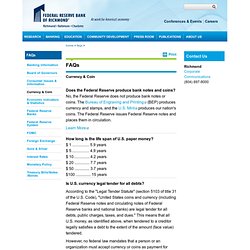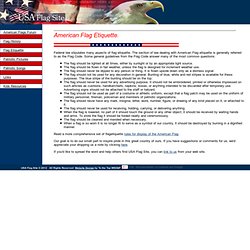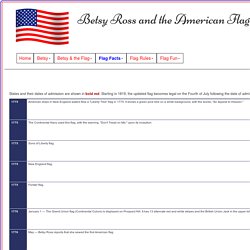

Currency and Coin - Frequently Asked Questions (FAQs) - Federal Reserve Bank of Richmond. Does the Federal Reserve produce bank notes and coins?

No, the Federal Reserve does not produce bank notes or coins. The Bureau of Engraving and Printing (BEP) produces currency and stamps, and the U.S. Mint produces our nation's coins. Learn More How long is the life span of U.S. paper money? Is U.S. currency legal tender for all debts? According to the "Legal Tender Statute" (section 5103 of title 31 of the U.S. However, no federal law mandates that a person or an organization must accept currency or coins as payment for goods or services not yet provided.
Some movie theaters, convenience stores and gas stations as a matter of policy may refuse to accept currency of a large denomination, such as notes above $20, and as long as notice is posted and a transaction giving rise to a debt has not already been completed, these organizations have not violated the legal tender law. What are U.S. notes, and how do they differ from Federal Reserve notes? About detecting counterfeiting. is required. U.S. Coins in Circulation. Symbols-on-american-money. S Guide (3-5): Quick Facts: The United States of Amercia. States and Capitals Study List. U.S. State Abbreviations & State Postal Codes. US Time Zones - EST PST MST CST HST AKST. Different American English dialects, in 27 fascinating maps. American Flag Etiquette.
Federal law stipulates many aspects of flag etiquette.

The section of law dealing with American Flag etiquette is generally referred to as the Flag Code. Some general guidelines from the Flag Code answer many of the most common questions: The flag should be lighted at all times, either by sunlight or by an appropriate light source. The flag should be flown in fair weather, unless the flag is designed for inclement weather use. The flag should never be dipped to any person or thing.
Our goal is to do our small part to inspire pride in this great country of ours. If you'd like to spread the word and help others find USA Flag Site, you can link to us from your web site. Flag Timeline. Adoption of State Flag Desecration Statutes — By the late 1800's an organized flag protection movement was born in reaction to perceived commercial and political misuse of the flag.

After supporters failed to obtain federal legislation, Illinois, Pennsylvania, and South Dakota became the first States to adopt flag desecration statutes. By 1932, all of the States had adopted flag desecration laws. In general, these State laws outlawed: (i) placing any kind of marking on the flag, whether for commercial, political, or other purposes; (ii) using the flag in any form of advertising; and (iii) publicly mutilating, trampling, defacing, defiling, defying or casting contempt, either by words or by act, upon the flag. The Forgotten Verses of "The Star-Spangled Banner" Do you know all the words to “The Star-Spangled Banner”?

Many people have difficulty memorizing the lyrics of the first verse of this song, which is commonly performed at sports events and other public gatherings. But did you know that there are three additional verses that we almost never hear? How Did the “Star-Spangled Banner” Become the US National Anthem? In 1814, the poet and lyricist Francis Scott Key penned the lyrics to “The Star-Spangled Banner,” originally known as “Defense of Fort M’Henry.” During the War of 1812, Key witnessed the attacks on Baltimore and wrote the words based on his experiences this night. More than a century later, in 1916, President Woodrow Wilson signed an executive order designating “The Star-Spangled Banner” as the national anthem, and in 1931, the US Congress confirmed the decision.
The Forgotten Verses. Presidential Inaugural Addresses. Texas Facts.